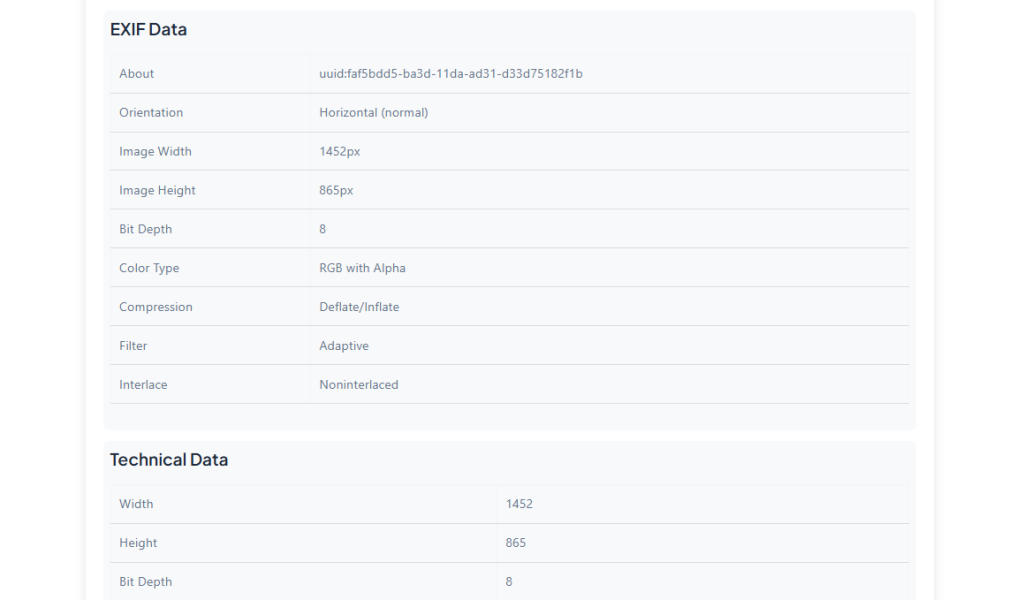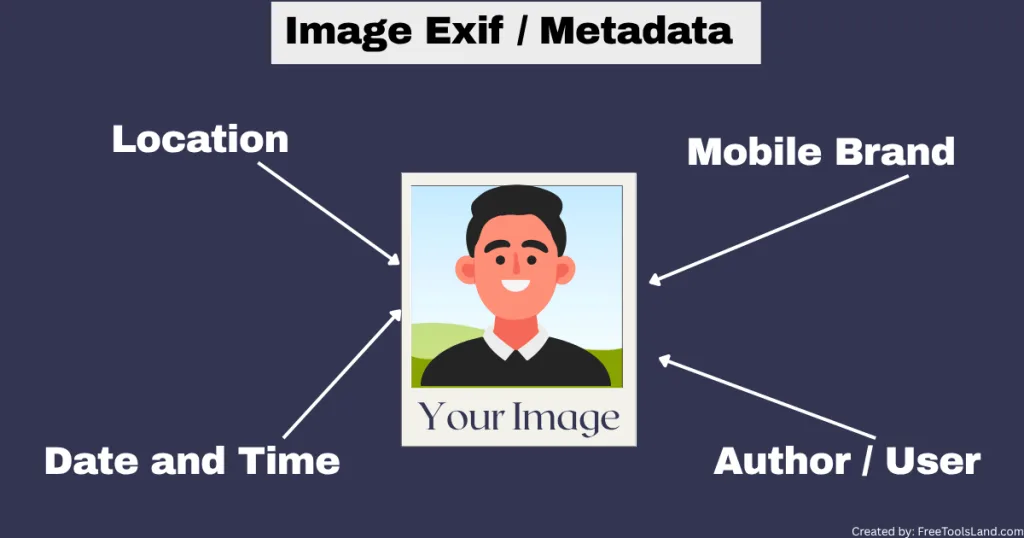Table of Contents
Introduction: Why Metadata Matters in the Age of AI
Every photo you take has a hidden story. Beyond the subject in the frame, your smartphone or camera automatically attaches tiny bits of information—like your location, time, and device model. This is called EXIF data.
And with the rise of metadata AI tools, anyone can analyze this information within seconds. The scary part? Most people don’t even know it exists.
This article is your complete guide to:
- What EXIF data is and how it’s created
- How AI tools can extract your personal details from images
- Why you should care (especially in 2025)
- How to view, understand, and delete EXIF data using our free EXIF Viewer Tool
Let’s break it all down and help you reclaim your digital privacy.
Section 1: What Is EXIF Data and Why Does It Exist?
Definition of EXIF
EXIF stands for Exchangeable Image File Format. It’s metadata automatically stored inside most image formats like JPEG and TIFF.

What’s Included in EXIF Data?
Here’s what your camera might reveal:
- Camera model & brand (e.g., iPhone 14 Pro)
- Date & time photo was taken
- GPS coordinates (latitude & longitude)
- Aperture, ISO, shutter speed
- Flash settings

That’s right—your sunset photo from last year might still contain your exact location.
Why It’s Useful
Photographers use EXIF data to:
- Analyze settings for future improvement
- Geotag locations for memories or documentation
- Sort files by date/time
But when this data falls into the wrong hands—it becomes a privacy issue.
Section 2: The Rise of Metadata AI
What Is Metadata AI?
Metadata AI refers to machine learning algorithms that analyze image metadata to detect patterns, user behavior, and identity traits. Some can even guess where and when the photo was taken—just from the data alone.
Real-World Use Cases
- Law enforcement uses metadata AI to locate missing persons
- Journalists verify image authenticity
- Hackers use it for social engineering and doxxing
Risk Factors in 2025
With AI getting smarter and faster:
- Your location data is more accessible
- Smart tools can map your behavior across images
- Data mining tools can profile you from your photo habits
📌 Want to try a safe way to inspect metadata? Use our EXIF Viewer Tool to analyze without risk.
Section 3: How to View EXIF Data on Any Device
Method 1: Use Our Free Metadata AI Viewer Tool
Upload your image and instantly view:
- GPS coordinates (with map)
- Device model
- Timestamp
- Exposure settings
✅ No download required
✅ Mobile friendly
✅ 100% private
Method 2: Check on Desktop
- Windows: Right-click image > Properties > Details
- Mac: Open image in Preview > Tools > Show Inspector > Info tab
Method 3: Use Phone Apps
Apps like Photo Investigator (iOS) or EXIF Tool (Android) offer advanced options—but always check privacy settings first.
Section 4: How to Delete or Strip EXIF Data
Why You Might Want to Remove Metadata
- Avoid location tracking
- Keep personal info private before uploading online
- Protect children and vulnerable subjects in photos
Tools to Remove Metadata
- Use image compression tools like Compress JPEG
- Use photo editing software (Photoshop > Export As > Uncheck metadata)
- Online EXIF scrubbers (like metapicz.com)
✅ Also coming soon on our site: One-click EXIF Remover with preview option
🔗 Related Tool: Use Aspect Ratio Cropper to trim or reframe images post-edit
Section 5: How Social Media Platforms Handle Metadata
Facebook, Instagram, Twitter – What They Keep
- Most platforms strip EXIF data on upload
- But they still keep that data internally
- Some platforms like Google Photos retain EXIF for sorting & AI tagging
Best Practice Before Uploading
- Always remove EXIF manually if privacy is a concern
- Use our EXIF Viewer to confirm before publishing
Section 6: Use Cases Where EXIF Is Useful
Not all EXIF data is bad.
Travel Blogging
Document and tag locations visually
Scientific Photography
Capture timestamped, GPS-located nature or research shots
Digital Forensics
Image timestamp and geolocation help verify authenticity
Section 7: Top Privacy Tips for Safer Image Sharing in 2025
| Tip | Action |
|---|---|
| Strip EXIF | Use our EXIF Viewer or photo editor export settings |
| Disable GPS tagging | Turn off location in your phone’s camera settings |
| Use screenshots | Screenshots often don’t retain original metadata |
| Re-save image in Paint/Preview | Most re-saved files strip EXIF data |
🔗 Internal Link: Use Freeform Cropper or Add Text/Overlays post-scrub
Section 8: Tools You Should Try Next
Section 9: External Resources
- Understanding EXIF and metadata
- EFF.org – Street-Level Surveillance and Metadata
- How-To Geek – Metadata Explained
Conclusion: Own Your Photos, Own Your Data
Photos are more than pixels. They carry embedded memories, technical details—and sometimes, your private information. In 2025, when AI can read that data instantly, privacy awareness is more important than ever.
✅ Stay informed
✅ Check your images with our EXIF Viewer
✅ Protect what matters most—your identity
This isn’t about paranoia. It’s about digital hygiene. And it starts with understanding what’s hidden in plain sight.
Still unsure how metadata affects you? Explore our full suite of image privacy and editing tools to take full control of your visual data.
